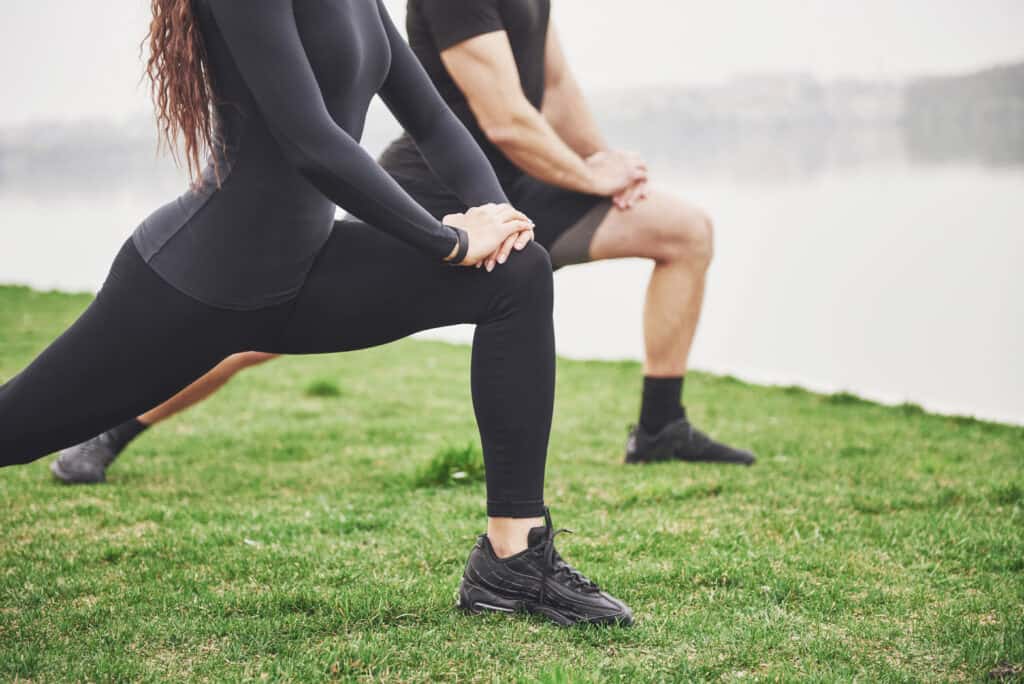Although it may seem counterintuitive, exercises for the sciatic nerve are more effective at relieving sciatica pain than bed rest. Likewise, physical activity is the best way to help your sore muscles bounce back faster after a grueling workout.
When your body aches and you have trouble walking or getting in and out of your car, it’s telling you it needs time to recover. During this period, your body gets a well-deserved break as it tries to rebuild and re-energize your muscles. However, if the body doesn’t heal as quickly as you want it to, you might want to build muscle recovery into your workout strategy to keep working toward your health and fitness goals.
Tips to Help You Speed Up Your Muscle Recovery Period
Get Enough Sleep
After training hard, getting five hours of sleep isn’t enough to give your body the time it needs to be at its best. Besides ensuring muscle tissue repair, sleep triggers your body to produce more good hormones that help you perform better the next day.
Unless you get seven to eight hours of shut-eye, you’ll increase your risk of getting injured over time, and you won’t experience the full benefits of all the hard work you’ve just done. Improving your sleep quality may require you to make your bedroom more conducive for sleeping, stick to a regular sleep schedule, and put away electronics at least 30 minutes before bedtime.
Drink Plenty of Water
As you work up a sweat, your body drains its water reserves. Since dehydrated muscles are sore muscles, you’ll want to up your water intake to prevent dehydration and speed up your muscle recovery process. Besides allowing you to experience a strong recovery, drinking plenty of water helps prevent headaches, fatigue, muscle cramping, and poor physical performance.
Power Up with Protein
Protein plays a significant role in rebuilding your muscles. For this reason, health and fitness experts recommend drinking a protein shake (with a 2:1 ratio of carbs to protein) before or after strenuous physical activity. It’s also best to get protein from other sources such as fish, chicken, eggs, chocolate milk, or a protein bar.
Get a Massage
Since a good massage promotes blood circulation, breaks up scar tissue, reduces fatigue, and eases muscle pain. It also helps reduce delayed onset muscle soreness. For this reason, most athletes incorporate some form of massage into their training programs.
Keep Your Legs Elevated
Whether sitting, standing, walking, or running, you usually spend most of your time with your legs down. According to experts, elevating your legs helps improve blood circulation and relieves sore muscles.
Apply an Ice Pack to Aching Muscles
Wrapping a cold compress or an ice pack in a towel and applying it on a strained muscle for around 20 minutes effectively reduces inflammation that’s causing discomfort. Since the cold constricts blood vessels, it decreases circulation to the area and reduces pain and swelling.

Stretch
According to experts, taking time to stretch your aching muscles will aid recovery and increase your flexibility. In addition, it may help prevent possible future injuries. While stretching improves muscle recovery and performance, your fitness goals determine the stretching technique you should perform.
A Closer Look at the Different Types of Stretches
Besides allowing your muscles to recover from your previous workout more quickly, a good stretching session prepares your body for the next workout. Check out the different types of stretches:
Static Stretching
Static stretches are probably the most time-honored type of stretches. In most cases, static stretching focuses on a single muscle group with each stretch. Moreover, it typically involves stretching a specific muscle to its furthest point and holding that position for around 15 to 30-seconds.
Static stretching are ideal for increasing flexibility, reducing the risk of injury, and promoting post-workout muscle recovery. Examples of static stretches include stretching the front of your thigh by lying on your stomach and pulling your foot to your buttocks or bending over and touching your toes to loosen the back of your thigh.
Dynamic Stretching
While static stretches don’t require movement, dynamic stretches usually target different muscle groups through side-to-side movements, forward and back motion, and rotation. With successive repetitions of these controlled movements, you’ll increase your range of motion and prepare your muscles for your next challenging workout. Some examples of dynamic stretching include arm circles, walking lunges, trunk twists, squats, side shuffles, and leg swings.
Ballistic Stretching
Ballistic stretching involves momentum to move a muscle into its maximum length before pausing for several seconds before returning to the starting position. Since it uses a moving limb to force it beyond its normal range of motion, a ballistic stretch works to lengthen the muscles and increase their elasticity.
An example of a ballistic stretching includes bouncing and jerking toward your feet as you try to touch your toes. It’s important to note that ballistic stretches are way more advanced than other methods. For this reason, they’re only highly recommended for athletes, sports players, and dancers trained to perform these stretches safely.
Proprioceptive Neuromuscular Facilitation (PNF)
The PNF technique was initially developed for neuromuscular rehabilitation programs to relax muscles and increase muscle tone and activity. It’s an advanced form of flexibility training that involves contracting a muscle that’s being stretched while gradually increasing tension and continuing contractions until that muscle achieves its maximum length.
Moreover, PNF stretching is ideal for increasing the range of motion and flexibility in both trained and untrained individuals. Besides using muscle contraction, the PNF technique utilizes gravity and momentum. While you can use resistance bands to do PNF stretching yourself, this type of stretching method is usually performed with a partner who applies constant tension.
Learn How to Perform Exercises for Sciatic Nerve Pain!
Keep your body moving with effective stretching exercises for the sciatic nerve and faster muscle recovery.
Stay Strong Together
Jefit, named best strength app by Sports Illustrated, Esquire, GQ, Men’s Health, Greatest, Forbes Health, and many others. It offers a community responsible for 92,000,000 workouts to date! The app, which recently passed 10 million downloads, comes equipped with a customizable workout planner and training log. The app has ability to track data, offer audio coaching cues, and can share strength and HIIT workouts with friends. Visit our members-only Facebook group. Connect with like-minded people, share tips, and advice to help get closer to reaching your fitness goals.
- Top Hip & Back Extension Exercises for Posterior Chain Power - April 23, 2025
- Best Exercises to Build Strong & Defined Shoulder Muscles - April 21, 2025
- Whey vs. Casein: What’s the Best Protein for Building Muscle - April 18, 2025
